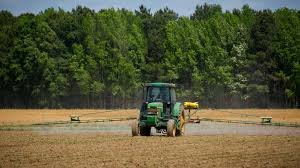Ontario offers a rich variety of farms that cater to diverse interests, from pick-your-own fruit and flower farms to farms with unique activities like corn mazes and animal encounters. These farms provide fresh, locally sourced produce, natural products, and engaging experiences that connect visitors directly with the land.
The province’s farms are not only places to buy fresh food but also popular destinations for family outings, seasonal events, and immersive agricultural tours. Whether one seeks a relaxing day among flower fields, a taste of local honey, or a hands-on fruit-picking adventure, Ontario’s farms offer accessible options close to major cities.
Visitors can explore everything from charming family-run honey shops to extensive flower farms and markets. Many farms also host activities suitable for all ages, making them ideal for both locals and tourists looking to experience rural life and seasonal harvests.
Types of Farms in Ontario
Ontario hosts a diverse range of farms that reflect its fertile soil and favorable climate. The province supports major agricultural sectors, including dairy production, extensive crop cultivation, and various types of livestock farming. These farm types play crucial roles in Ontario’s economy and food supply.
Dairy Farms
Dairy farming is one of Ontario’s largest agricultural sectors. The province produces about one-third of Canada’s milk and dairy products. Most dairy farms are family-owned, with herds ranging from small herds of a few dozen cows to larger commercial operations.
Ontario dairy farms focus on high-quality milk production, providing essential ingredients for cheese, butter, and other dairy goods. Advanced technologies such as automated milking systems and farm management tools are common. The dairy industry also emphasizes strict animal welfare and environmental sustainability practices.
Crop Farms
Crop farms in Ontario primarily grow corn, soybeans, and wheat, which are the province’s main cash crops. These crops benefit from Ontario’s temperate climate and well-drained soil, making the region a leader in grain production within Canada.
Farmers use modern equipment and crop rotation techniques to maintain soil health and improve yields. Besides field crops, Ontario supports greenhouse farming, producing vegetables, fruits, and flowers year-round. Crop farms vary widely in size, ranging from small family plots to large-scale commercial farms.
Livestock Farms
Livestock farming in Ontario is diverse, including beef cattle, hogs, and poultry. Beef farms are smaller in number compared to dairy but contribute significantly to the regional meat supply. Hog farms produce pork for both local consumption and export.
Poultry farming, which includes chickens and turkeys, is well developed, providing eggs and meat consistently throughout the year. Ontario livestock operations often incorporate biosecurity measures and sustainable feeding practices to ensure animal health and product quality. Most farms are family-run, balancing tradition with modern farming methods.
Ontario Farm Economy and Regional Highlights
Ontario’s agricultural landscape displays clear regional distinctions shaped by climate, soil, and market access. The province’s farm economy drives significant business revenue and supports a wide range of local food initiatives that connect rural producers to urban consumers.
Key Agricultural Regions
Ontario’s farming activity is concentrated in five main regions: Central, Eastern, Western, Southern, and Northern Ontario. Each offers distinct agricultural conditions and specialties.
Southern Ontario benefits from fertile soils and a favorable growing season, making it ideal for field crops, fruits, and vegetables. The region is known for intensive, high-value agriculture like tender fruits and vineyards.
Northern Ontario features smaller-scale farms focused on dairy and livestock, adapting to cooler climates and shorter growing periods. Central and Eastern Ontario bridge diverse agricultural outputs, including mixed crop and livestock operations.
Western Ontario supports large-scale production of grains and oilseeds, utilizing extensive farmland and mechanized farming systems.
Economic Impact
Agriculture and food processing form a crucial part of Ontario’s economy. The sector generates approximately $30 billion in total business revenue annually. Direct farm revenue accounts for about $18 billion, while related industries boost this figure substantially.
Ontario hosts over 48,000 farms, contributing more than a quarter of Canada’s total farm count. Despite a slight decline in farm numbers since 2016, the sector remains a key employer and economic driver, supplying raw commodities to a sizeable food manufacturing industry.
The farm economy also stimulates rural economies through purchasing and investment in equipment, services, and infrastructure, highlighting its broader value beyond farmgate sales.
Farm Tours and Local Markets
Farm tours and local markets offer Ontario residents opportunities to engage directly with agricultural producers. These experiences highlight sustainable practices, region-specific crops, and seasonal products.
Many farms offer educational tours focusing on dairy, fruit picking, or vineyard visits, showcasing the diversity of farming techniques and crops. Local farmers’ markets serve as important outlets where consumers buy fresh, locally grown food.
These venues promote community connections and support small-scale farmers by providing access to urban markets, reinforcing Ontario’s commitment to quality and sustainability in food production.

